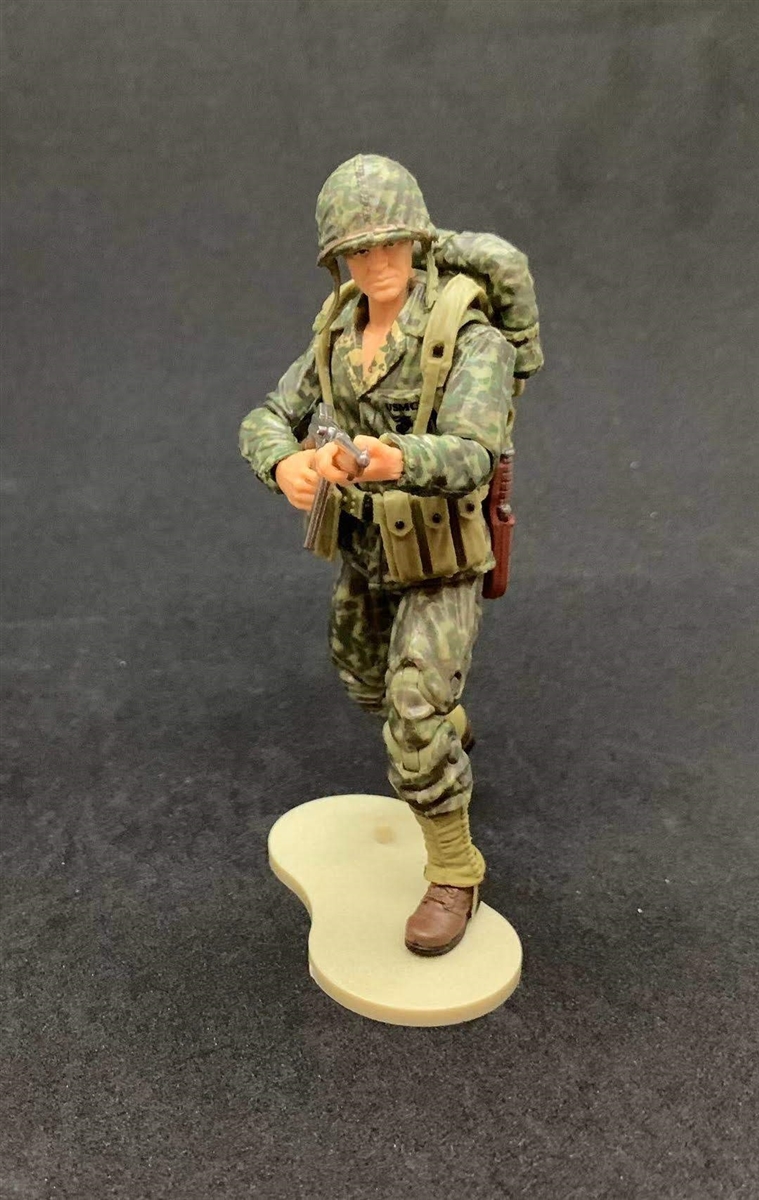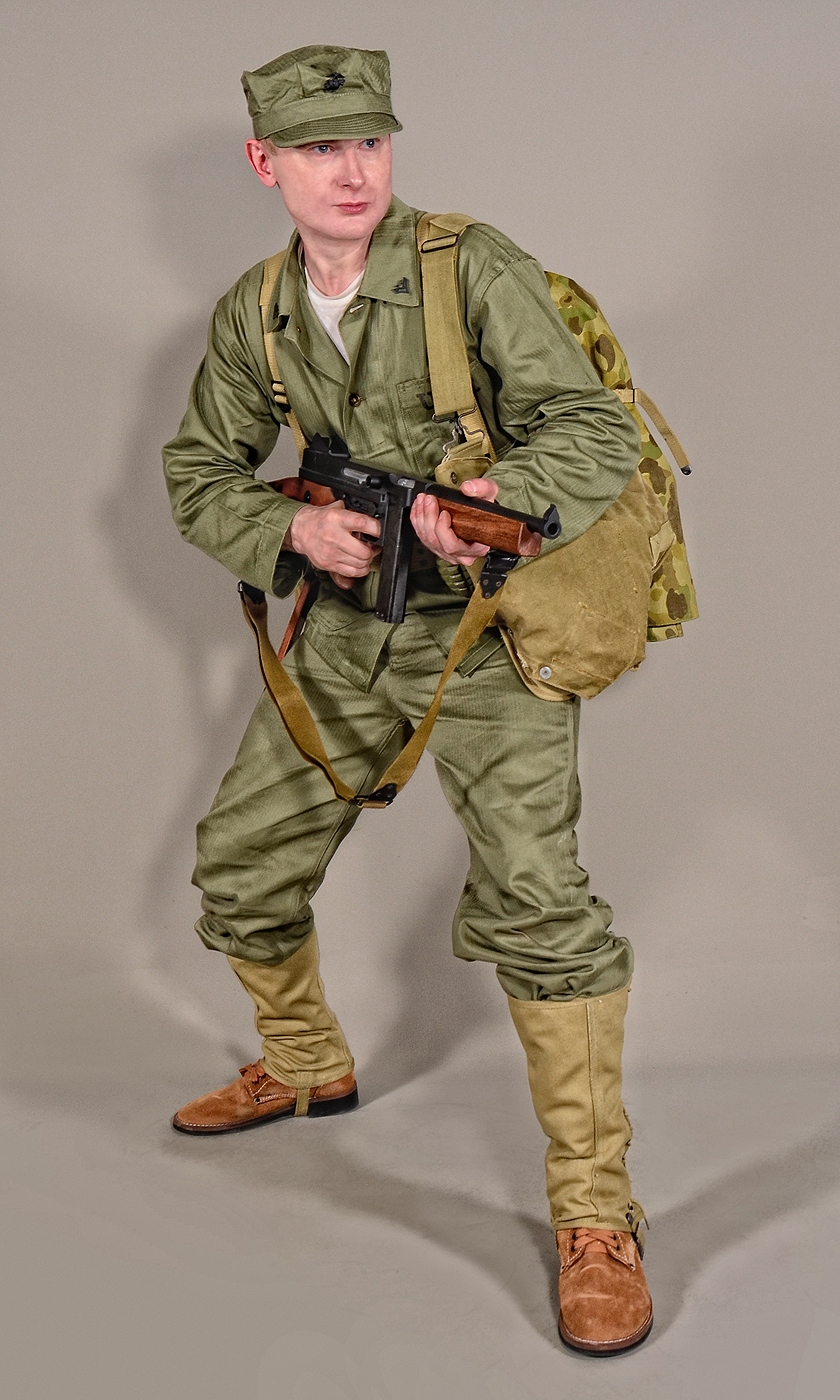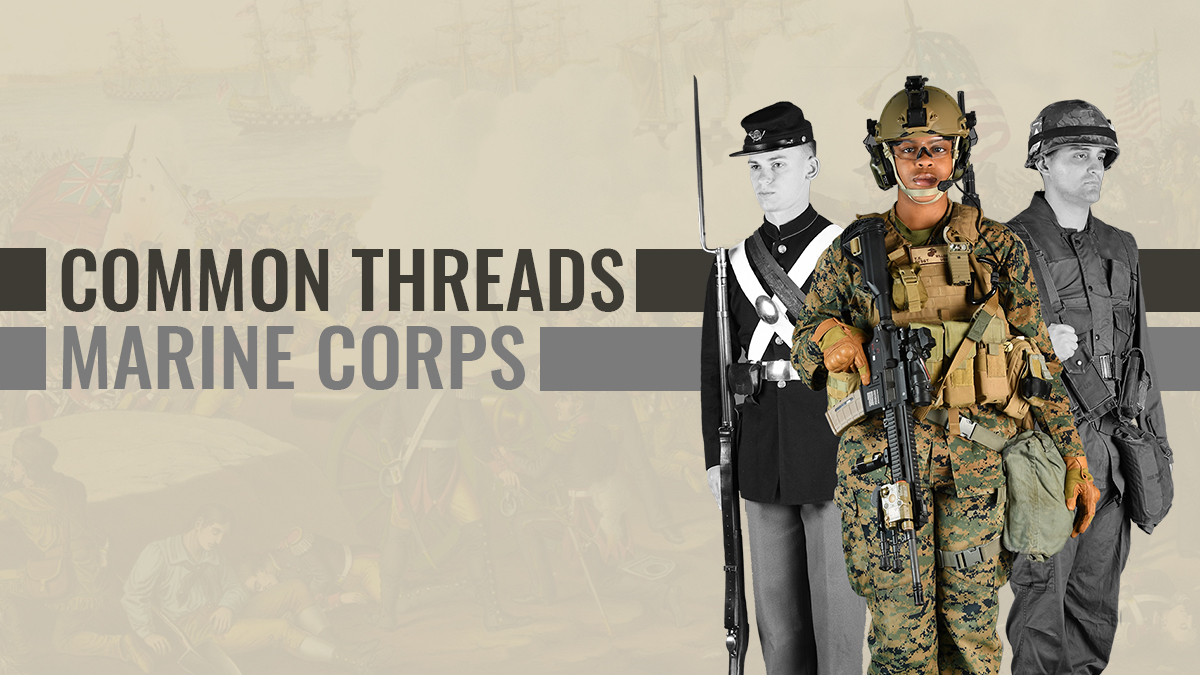Marines Ww2 Uniform - The uniforms of the United States Marine Corps serve to distinguish the Marine Corps from members of other services. Among the current uniforms of the United States Armed Forces, the Marine Corps uniforms serve the longest. The Marine Dress Blue uniform has essentially been worn in its current form since the 19th century with minor changes.
At the beginning of World War II, the Marine Corps had four standard uniforms, namely The Dress Blues, The Summer Service Uniform, The Winter Service Uniform, and The Marine Utility Uniform. Dress blues could be worn with a white cloth belt, a leather belt or a blue cloth belt for officers, but their issue ceased in early 1942, except for recruits and ceremonial units for the duration of the war. Issued with a cloak and shell corduroy belt for enlisted men with a Sam Brown belt for officers (until both were replaced by a cloth belt of the same material in 1943), the green winter service uniform was originally worn as a field uniform (as the 1st Provisional Marine Brigade in Iceland ). wear daily). The crew cap was introduced, originally intended to be worn abroad but quickly becoming standard. The summer khaki service uniform had pointed flaps on the pockets, unlike the army trousers which only had front pockets.
Marines Ww2 Uniform

The Marine Corps takes appropriate pride in the dress and demeanor of its members. No other uniform creates the image of a choir like the blues. cut, line and fit; The sailor in his blues was the symbol of the chorus for most Americans, especially in the antebellum years.
Buy U.s. Navy Uniforms In World War Ii Series: Vol 1: Sailors In Forest Green: Usn Personnel Attached To The Usmc Book Online At Low Prices In India
Leon Uris described it in his classic novel Battle Cry: “The sea school sailors were a sight that made every foot skip. Six feet tall, husky and tanned, they were the men who manned the patrol battleships and cruisers of the fleet. the splendid golden sabers, the luster of their golden buttons and buckles, the mirror of their shoes and the brims of their caps, the whiteness of their belts and gloves, and the magnificent harmony of their movements, was a sight that could not be seen."
Contrary to public image, most WWII Marines never wore the blues during their service. Many expected to receive a file when they reported to boot camp, especially those who reported at the start of the war. More than one sailor shared his surprise when he first learned that the corps wore drab wartime uniforms.
Before the war, marines were equipped with blues as part of their baggage. The officers and midshipmen had to buy and maintain the Blues at their own expense. After the suspension of issuance, Marines could purchase their own, but there were few opportunities to wear them during the war.
For all ranks, the blue blouse dress had a stand-up collar. Officers' tunics had five buttons down the front and military tunes had seven buttons. Officers' tunics had four front pockets and those for Marines had no pockets. Inscribed blouses had scarlet collar trim, front bow tie, shoulder straps and French cuffs. Officers' blouses were without this equipment.
Bachmann Europe Plc
Breeches were sky blue for enlisted seamen, midshipmen, company and field officers. Pants for Marines were issued with a button and without side pockets. Stripes depending on rank were sewn on the outer seam of the trousers. Non-rated Marines wore pants without stripes. Officers, NCOs and NCOs wore a 1.5 inch scarlet stripe on their trousers. General officers wore dark blue trousers with a black mohair stripe.
The summer service uniform, known throughout the Marine Corps as "khakis", was first adopted for wear in 1904. Prior to the introduction of the service uniform in 1941, khakis were worn not only in crew, but also in field exercises and in combat. In temperate climates, this uniform was worn only between April and September. It was worn year-round at tropical posts and corps stations. Khakis were approved as a work uniform and also for vacation and freedom.
In the early campaigns of World War II, including Wake Island, the Philippines, and Guadalcanal, khaki was worn in combat. After the introduction of the service uniform, the khaki dress was worn as a "universal" field and garrison uniform. Although rarely worn by infantrymen in combat thereafter, they were worn almost everywhere in the Pacific.
For junior sailors, the summer service uniform consisted of a long-sleeved shirt and trousers. Both were made of 100% cotton. The shirt had two flap chest pockets and an adjustable collar. The trousers had two side pockets. As is the case with all business and suit trousers, there were back pockets.
Ww2 Us Marine Corps Leger Hbt Pacific Camouflage Jas Hoge Kwaliteit Jas|us Ww2|ww2 Usus Uniform
Officers were legally allowed to either wear the same uniform as the NCOs of the Marine Corps, or to procure high quality khaki khakis for their officers. Sometimes they wore uniforms made of gabardine and worsted wool blends.
In many camps and stations, Marines lived in tents. They often did not have access to electricity and irons. To iron their khaki pants, they sometimes resorted to "pressing the bed." To do this, they put their shirts and pants straight on the bed under the bed mat. Then they slept on the uniform and used their body weight to smooth out the worst wrinkles.
The winter service uniform was the standard uniform of the Marine Corps for wear in garrison, on leave, and on leave, and on all occasions when the service uniform was not mandatory. It was worn in most temperate regions from September to April.
This uniform was the traditional forest green color specific to the Corps, giving it the nickname "The Greens". Forest green service uniforms were first introduced to the Marine Corps in 1912. Before World War II, the service uniform was worn not only in garrison, but also in field training and combat.
United States Marine Corps Uniforms, Insignia And Personal Items Of World War Ii,...
Many of the young men who joined the Marines, especially at the beginning of the war, assumed that the standard uniform was blue. However, on August 6, 1942, Marine Corps Command ordered all units to stop issuing Dress Blues for the duration of the war. Marines who already had blue pants could keep them until they wore out. After that date, any Marine who wanted a set of Blues had to buy one.
This uniform consisted of a semi-fitting blouse with four pockets and matching green trousers. A khaki shirt and a field scarf were worn under the blouse. The crew belt, also called the "light leather belt", was also worn by military sailors with a green color. This belt had a heavy brass buckle that was occasionally useful in bar fights. Officers wore either a green cloth belt with a brass buckle or a Sam Brown belt when carrying their swords.
Enlisted Marines received their first issue of uniforms and gear in a bag when they were first sent to the Corps. During the period of service, any reissue and replacement of uniforms and equipment were free of charge. Officers received a small initial allowance when they first joined the Marine Corps to purchase the required uniforms. Then the officers had to buy uniforms at their own expense.

The uniform for winter service was made of heavy kersey wool. Officers could purchase uniforms in optional fabrics such as gabardine and wool serge. All Marines took great pride in their appearance and uniforms were tailored to individual Marines.
File:oni Jan 1 Uniforms And Insignia Page 072 Japanese Navy Ww2 Commissioned Officers. Summer Field
Prior to 1941, the Marine Corps did not have a dedicated field uniform. Marines in combat and field training wore winter or summer service uniforms, depending on the season and geographic location. During the early battles of World War II, Marines wore the World War I-style M1917A1 Steel Helmet Summer Service Uniform in combat. The 1941 pattern service uniform was standardized on 7 November 1941. It was originally intended as a general duty uniform to be worn over the service uniform for work parties, field days etc. However, it quickly replaced the wearing of service uniforms for use in the field. The service uniform gave the World War II Navy a professional look. It was simple, low maintenance and free of frills and unnecessary features.
The utility uniform of 1941 was a two-piece suit of heavy sage-green twill cotton. The jacket had three pockets without a flap, one on the left side of the chest and two on the front side. It was secured by four riveted metal buttons embossed with the inscription “U. S. Marine Corps", although the top button at the collar was rarely fastened. The trousers had a button fastening with four pockets. Depending on the manufacturer, there were several variations of pockets on the trousers.
The service uniform had excellent carrying and camouflage properties. It was well suited to the conditions of the Pacific campaigns. Marines wore it in every deployment, from field training to combat. As a result, the service uniform was reserved for formal occasions, freedom, holidays, etc.
The environment in which the Marines fought was harsh

Post A Comment:
0 comments so far,add yours